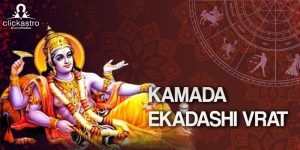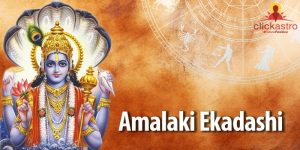Purnima Vrat, Start Afresh on This Day
Purnima is the word used for the full moon in Sanskrit, and it is the day on which the full moon occurs. There are numerous ways of spelling Purnima/Poornima/Pournima, and it is also called Purnamasi or Puranmasi. Purnima Vrat is considered auspicious and has important significance in Hindu culture. The moon has its full brightness on that day, and on this day, people all over the country worship Lord Vishnu and his avatars. Here we offer a quick guide to the occasion – Purnima/Full Moon.
What is Purnima?
The Sanskrit word “Purnima” or “Poornima” refers to “full moon”. This day also marks the division between Shukla Paksha and Krishna Paksha. The bright full moon in the sky symbolizes the elimination of darkness and dullness with a blaze of wisdom. Hence, it is considered very auspicious.Significance and Importance of Purnima Vrat
The significance of Purnima/Poornima can be judged by the fact that several renowned Hindu festivals fall on this day. Moreover, devotees fast and offer prayers to Lord Vishnu on this auspicious day. The rituals and ceremonies of this day signify birth or creation, as, on the full moon day, the moon completes its one cycle around the earth. In Hinduism, it symbolizes the end of an event, the beginning of new chapters, and a new life.Read Today’s Horoscope
What is Purnima Vrat?
Purnima Vrat refers to fasting. Many devotees fast for this auspicious occasion either on Purnima day or on the day before, i.e., on Chaturdashi, which depends on the starting time of Purnima Tithi. Generally, fasting starts from sunrise and ends at the rise of the full moon.
- To conduct Purnima Vrat, the devotees must take a bath before sunrise.
- From sunrise till the rise of the full moon, food or water is not consumed.
- Those who are unable to conduct such fasting can consume fruits and milk once. However, cereals, pulses, and regular salt are not allowed.
- The fast can be ended by offering prayers to the full moon.
- There is no special puja or diet for this fast.
Different Types of Purnima Vrat or Full Moon and How They are Celebrated in India:
Karthik Poornima:
Kartik Poornima is also called Tripura Purnima and is celebrated as Dev Deepavali, i.e. after 15 days of Diwali.
Shravan Poornima:
Shravan Poornima has multiple significance. Mostly recognised as a day of the Raksha Bandhan festival, it is also celebrated as Kajri Purnima and Nariyal Purnima, while the south Brahmin community celebrates Avani Avittam on this day.
Vat Purnima:
Vat Purnima is celebrated by married women as they fast for their husbands on this day. It is mostly celebrated in Gujarat, Maharashtra, Karnataka, and some regions of eastern Uttar Pradesh.
Guru Purnima:
Guru Purnima is celebrated in honour of Sage Vyas, author of Mahabharata, as he is one of the greatest gurus of all time. Hence, the day is celebrated on his birth tithi.
Sharad Purnima:
Sharad Purnima marks the end of the monsoon and the beginning of the winter season. It is celebrated in various ways in different parts of the country. However, it is most commonly celebrated with “Amrit Kheer”, which is kept under the rays of the moon. It is believed that on this day, moon rays drip nectar that can energize and rejuvenate the body and soul.
Buddha Poornima:
Buddha Poornima, the day of Gautam Buddha’s birth, enlightenment, and demise.
Phalgun Purnima:
Phalgun Purnima is celebrated as Holi in most parts of the country.
Datta Jayanti:
Datta Jayanti is celebrated as the birthday of God Dattātreya- a combined form of Lords Brahma, Vishnu and Maheshwara (Shiva)
Chaitra Purnima:
Chaitra Purnima is celebrated as Hanuman Jayanti. However, Hanuman Jayanti is celebrated on different days in various parts of the country.
Shakambhari Purnima:
Shakambhari Purnima occurs in Paush month and is the concluding day of Shakambhari Navratri.
Madhu Purnima:
Madhu Purnima is a honey-offering Buddhist festival.
Poornima Vrat Dates 2025
| Month | Hindu month | Date |
| January | Pausha | 13 January, Monday |
| February | Magha | 11 February, Tuesday |
| March | Phalguna | March 13, Thursday |
| April | Chaitra | 13 April, Sunday |
| May | Vaishakha | 11 May, Sunday |
| June | Jyeshtha | 10 June, Tuesday |
| July | Ashadha | 10 July, Thursday |
| August | Shravana | 08 August, Friday |
| September | Bhadrapada | 07 September, Sunday |
| October | Ashwina | 06 October, Monday |
| November | Kartik | 04 November, Tuesday |
| December | Margashirsha | 04 December, Thursday |
Significance of Every Purnima Vrat
Paush Purnima
Pausha Purnima is also celebrated as Shakambari Jayanti, dedicated to the worship of Goddess Shakambari, an avatar of Goddess Durga. The tribal communities of Chhattisgarh celebrate the harvest festival of Charta on Pausha Purnima day. Pausha Purnima marks the beginning of the ritualistic Magha snan or bath and also the end of winter. It also holds special significance as it falls during the renowned Maha Kumbh Mela, where Hindus gather together as part of the pilgrimage and take ritualistic baths. It is believed that taking the Pausha Purnima bath absolves the devotees of all their sins and fulfills their desires and wishes. Pausha Purnima provides an opportunity for the devotees to eliminate their inner darkness.
Magha Purnima
The month of Magha is considered to be one of the holiest months in the Hindu calendar as it is dedicated to Lord Vishnu and Lord Shiva. According to Hindu mythology, Magha Purnima is considered to be a sacred day to perform spiritual and religious rituals. It also coincides with the Kumbh Mela. It is believed that performing a bath in a holy river on the eve of Magha Purnima is highly auspicious.
Hence devotees flock in large numbers to the banks of rivers Ganga, Yamuna, Godavari, Narmada, etc. By taking a bath in the holy rivers, performing charities, and making donations, one is absolved of their past and present sins and attains moksha or liberation. On Magha Purnima day, Lord Vishnu and Lord Hanuman are worshipped as it is believed that offering prayers to these deities on Magha Purnima fulfills the desires of the devotees. On Magha Purnima day, a float festival is organised in the regions of Tamil Nadu.
Phalgun Purnima
According to the Hindu calendar, Phalgun Purnima is the last Purnima on which the festival of colours, Holi, is celebrated. This day is also observed as Lakshmi Jayanti in some parts of the country. Lakshmi Jayanti is the birth anniversary of Goddess Lakshmi, the Goddess of wealth and abundance. It is believed that observing the Phalguna Purnima Vrat and worshipping Lord Vishnu and the Moon God on this day bestows the devotees with divine blessings and also absolves them of their past and present sins.
Chaitra Purnima
Hindus consider Chaitra Purnima as a time to correct their words and actions and get rid of negative deeds. Devotees seek the blessings of god to lead a life of virtue. Chaitra Purnima also coincides with Hanuman Jayanti, the birth anniversary of Hanuman, and is therefore considered auspicious. Like all other Purnima Vrat, devotees take the ritual bath in holy rivers and offer prayers to Lord Vishnu and Moon God to seek divine blessings. Performing charities and making donations on this day are considered pious acts to absolve one of their past and present sins.
Vaishakha Purnima
Vaishakha is the second month according to the Hindu calendar. The significance of Vaishakha Purnima is highlighted in the Skanda Purana. On this day, devotees worship Lord Vishnu and are blessed with abundance, peace, and happiness. Observing the Vaishakha Purnima vrat bestows prosperity on the devotees. This day also holds great significance as people also celebrate Buddha Jayanti, the birth anniversary of Lord Buddha, on this day.
Jyeshtha Purnima
Jyeshtha Purnima is considered to be of great significance by married Hindu women as they worship Goddess Savitri on this day. This day is also known as Vat Purnima. This day celebrates the marital devotion and purity of women in their marital life. Besides Goddess Savitri, women also worship Lord Brahma, Yama, the god of death, and Sage Narada on this day. Legend has it that when Yama took away the life of Savitri’s husband, Satyavan, Savitri intervened and performed a strict penance which forced Yama to restore Satyavan’s life. So on this day, Satyavan is also worshipped along with Savitri. It is believed that married women who pray and fast on this day are bestowed a harmonious married life and the long life of their husbands.
Get Free Couples Horoscope
Ashadha Purnima
During the month of Ashadha, on Purnima day, the moon is positioned in Purvashada or Uttarashada Nakshatra. If on the Ashadha Purnima, the moon is positioned in Uttarashada nakshatra, then it’s considered to be very auspicious and fortunate to be blessed with abundance, prosperity, and wealth. Ashadha Purnima is also celebrated as Guru Purnima, with the day having great significance among Hindu and Buddhist cultures. On this day, devotees seek the blessing of their Guru and their teachings.
Devotees also observe Gopadam Vrat on Ashadha Purnima, offering prayers to Lord Vishnu to be blessed with happiness and prosperity. Observing the Gopadam vrat with full devotion and following the rituals strictly bestows the blessings of Lord Vishnu in attaining all worldly pleasures fulfilling every desire of the devotees and gaining moksha. It is ideal for natives born under Uttarshada, or Purvashada nakshatras to perform charity and meditation on Ashadha Purnima, which bestows them with spiritual benefits and solace in every aspect of their life. Students should perform Saraswati Puja on Ashadha Purnima, which blesses them with academic success and the ability to understand and learn any skill easily.
Download Your Education Horoscope
Shravana Purnima
Shravana Purnima holds immense significance among Hindus as various auspicious rituals are performed on this day. On this day, rituals such as Upanayana and Yagyopaveet are performed. This day is considered the most sacred day for performing the Shudhikaran ritual by Brahmins. Devotees offer special prayers to Lord Shiva on this holy day. The festival of Raksha Bandhan is celebrated on Shravana Purnima, and therefore the month of Shravana holds immense significance for its religious and spiritual significance Shravana Purnima is considered important among Hindus for various reasons. These include a celebration of Kajari Purnima in various parts of India, where Hindu women sow barley in pots filled with soil and leaves of trees. The pots are carried by women on their heads and dropped into the nearest water body. They worship Goddess Bhagwati, sow wheat, and offer prayers for a bounty harvest. Kajari Purnima is mainly celebrated in Uttar Pradesh, Chattisgarh, and Madhya Pradesh. The Kajari Purnima vrat is observed by mothers for the prosperity and long life of their sons. Another festival that coincides with this day is the Nariyal, or Narali Purnima, observed primarily in the coastal regions of India. Devotees worship the sea and worship Lord Varuna, the god who controls water. It is believed that worshipping Lord Varuna bestows immunity from any kind of danger from sea or water bodies. On this day, a coconut (nariyal) is offered to the sea with immense devotion According to the Puranas, the sacred Amarnath Yatras begins on the eve of Guru Purnima and concludes on Shravan Purnima. Devotees worship Lord Shiva by offering water on Shiva Lingam and successfully end their Amarnath yatra on this day. Pavitropana is another festival celebrated on Shravana Purnima day by the Gujarati community. Legend has it that offering water to the Shiva Lingam and chanting prayers bestows divine blessings of Lord Shiva with good fortune and absolution of all sins.Bhadrapada Purnima
Bhadra Purnima is considered to be very auspicious and sacred for conducting Griha Pravesh ceremonies by worshippers of Lord Vishnu. Devotees seek the blessings of Lord Vishnu for the betterment of their life and blessings of abundance. Bhadrapada Purnima also holds significance as the very next day of Bhadrapada Purnima marks the beginning of the Pitru Paksha Shraddha.
Ashwina Purnima
Ashwina Purnima, otherwise known as Sharad Purnima, is the day when the moon is closest to the earth. Therefore on this day, the moon shines the brightest and its light is believed to be soothing and healing. It is believed that on Sharad Purnima, the moon is full of its 16 Kalas or virtues and drips the nectar of eternity. The moonlight attains the properties that nourish one’s body and soul. Thus, on Sharad Purnima, Hindu households keep water in a copper utensil or prepare rice kheer and place it in the moonlight for the entire night. This is then consumed the next morning and even distributed among family members and relatives. Sharad Purnima is also associated with Lord Krishna, who is said to be born with 16 Kalas of personality. This day is therefore celebrated as Raas Purnima, the day when Lord Krishna performed the divine dance of love or MahaRaas with Goddess Radha and other Gopis. The Hindu scriptures also indicate that Goddess Lakshmi, the Goddess of wealth and prosperity, was born on this day. It is believed that on Ashwin Purnima, Goddess Lakshmi takes rounds on the earth and watches the deeds of all human beings. Sharad Purnima is also known as Kojagari Purnima, which in a literal sense means one who is awake the entire night. It is believed that those who stay awake the entire night of Sharad Purnima and worship Goddess Lakshmi are bestowed with immense wealth and blessings even if they do not have a Dhan Yoga in their Kundli. In Odisha, Sharad Purnima is celebrated as Kumar Purnima when unmarried girls observe fast and worship Lord Karthikeya to gain a suitable life partner. The fast is concluded in the evening after offering arghya to the moon.Karthik Purnima
Hindu mythology considers Karthik Purnima as religiously and spiritually significant. It is believed that performing the ritual bath (Karthik Snan) and worshipping Lord Vishnu bestows immense fortune on the devotees. This day is also considered auspicious for conducting religious ceremonies as it brings joy and happiness. Devotees believe that performing the ritualistic Karthik Snan is equivalent to performing 100 Ashvemedha Yagna.








Inform good date for rice feeding to a new born girl child DIB 14 August 2018 at 1.31 pm IS and 4.01 pm Singapore time. Born in Singapore Thiruvonam star. Malayalee Hindu Nair Name Zara.
Hi,
Find the most accurate Muhurat for the annaprashan ceremony
Muhurat – January 2020 https://www.clickastro.com/blog/muhurtham/
Hello sir
I’m bhavani
My son:25-05-2001
Rob:08:30 pm
POB: zahirabad Telangana India
Will I have love or arrange marriage
Hi,
You must be curious to know about your marriage! A lot of questions – ‘When’, ‘Who’, ‘How’ would arise in your mind when you think about marriage. The horoscope tells everything about your marriage.
Get your personalized free marriage predictions based on time and date of birth now. Just enter your birth detail. You will get free marriage predictions. https://www.clickastro.com/free-marriage-predictions
Har Har Mahadev
Thank You for explaining the significance of MahaShivaratri in detail.🙏🙏 Much appreciated.
My grand son’s DOB is 07.09.2021, born in Canada and uttram nakshatram. Can you suggest a good date for chorunnu in March 2022
Please check this post Annaprashan Muhurat. You can find the details